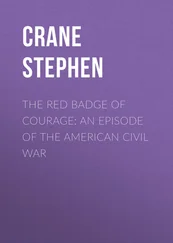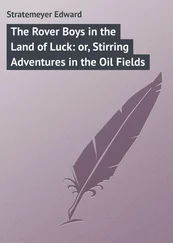Stephen Fry - The Ode Less Travelled - Unlocking The Poet Within
Здесь есть возможность читать онлайн «Stephen Fry - The Ode Less Travelled - Unlocking The Poet Within» весь текст электронной книги совершенно бесплатно (целиком полную версию без сокращений). В некоторых случаях можно слушать аудио, скачать через торрент в формате fb2 и присутствует краткое содержание. Жанр: Старинная литература, на английском языке. Описание произведения, (предисловие) а так же отзывы посетителей доступны на портале библиотеки ЛибКат.
- Название:The Ode Less Travelled: Unlocking The Poet Within
- Автор:
- Жанр:
- Год:неизвестен
- ISBN:нет данных
- Рейтинг книги:3 / 5. Голосов: 1
-
Избранное:Добавить в избранное
- Отзывы:
-
Ваша оценка:
- 60
- 1
- 2
- 3
- 4
- 5
The Ode Less Travelled: Unlocking The Poet Within: краткое содержание, описание и аннотация
Предлагаем к чтению аннотацию, описание, краткое содержание или предисловие (зависит от того, что написал сам автор книги «The Ode Less Travelled: Unlocking The Poet Within»). Если вы не нашли необходимую информацию о книге — напишите в комментариях, мы постараемся отыскать её.
The Ode Less Travelled: Unlocking The Poet Within — читать онлайн бесплатно полную книгу (весь текст) целиком
Ниже представлен текст книги, разбитый по страницам. Система сохранения места последней прочитанной страницы, позволяет с удобством читать онлайн бесплатно книгу «The Ode Less Travelled: Unlocking The Poet Within», без необходимости каждый раз заново искать на чём Вы остановились. Поставьте закладку, и сможете в любой момент перейти на страницу, на которой закончили чтение.
Интервал:
Закладка:
There are some stanzaic forms, as we shall find in the next chapter, which seem limp and unfinished without the comfort and assurance that rhyme can bring, especially ballads and other forms that derive from, or tend towards, song. In other modes the verse can seem cheapened by rhyme. It is hard to imagine a rhyming version of Wordsworth’s ‘Tintern Abbey’ or Eliot’s Four Quartets , for example. This may of course be a failure of imagination: once a thing is made and done it is hard to picture it made and done in any other way.
The question ‘to rhyme or not to rhyme’ is not one I can answer for you, except to say that it would almost certainly be wrong to answer it with ‘always’ or ‘never’.
Rhyme, like alliteration (which is sometimes called head rhyme ) is thought to have originated in pre-literate times as a way of allowing the words of sung odes, lyrics, epics and sagas more easily to be memorised. Whatever its origin, the expectations it sets up in the mind seem deeply embedded in us. Much of poetry is about ‘consonance’ in the sense of correspondence : the likeness or congruity of one apparently disparate thing to another. Poetry is concerned with the connections between things, seeing the world in a grain of sand as Blake did in ‘Auguries of Innocence’, or sensing loss of faith in the ebbing of the tide as Arnold did in ‘Dover Beach’. You might say poets are always looking for the wider rhymes in nature and experience. The Sea ‘rhymes’ with Time in its relentless flow, its eroding power, its unknowable depth. Hope ‘rhymes’ with Spring, Death ‘rhymes’ with Winter. At the level of physical observation, Blood ‘rhymes’ with Wine, Eyes with Sapphires, Lips with Roses, War with Storms and so on. Those are all stock correspondences which were considered clichés even by Shakespeare’s day of course, but the point is this: as pattern-seeking, connection-hungry beings we are always looking for ways in which one thing chimes with another. Metonym, metaphor and simile do this in one way, rhyme, the apparently arbitrary chiming of word sounds, does it in another. Rhyme, as children quickly realise, provides a special kind of satisfaction. It can make us feel, for the space of a poem, that the world is less contingent, less random, more connected, link by link. When used well rhyme can reify meaning, it can embody in sound and sight the connections that poets try to make with their wider images and ideas. The Scottish poet and musician Don Paterson puts it this way:Rhyme always unifies sense […] it can trick a logic from the shadows where one would not otherwise have existed.
An understanding of rhyme comes to us early in life. One sure way to make young children laugh is to deny them the natural satisfaction of expected end-rhymes, as in this limerick by W. S. Gilbert:There was an old man of St BeesWho was horribly stung by a waspWhen they said: ‘Does it hurt?’He replied: ‘No it doesn’t–It’s a good job it wasn’t a hornet.’
We all know of people who are tone-deaf, colour-blind, dyslexic or have no sense of rhythm, smell or taste, but I have never heard of anyone who cannot distinguish and understand rhyme. There may be those who genuinely think that ‘bounce’ rhymes with ‘freak’, but I doubt it. I think we can safely say rhyme is understood by all who have language. All except those who were born without hearing of course, for rhyming is principally a question of sound .
The Basic Categories of Rhyme End-rhyme s– internal rhymes
While it is possible that before you opened this book you were not too sure about metre, I have no doubt that you have known since childhood exactly what rhyme is. The first poems we meet in life are nursery rhymes .Humpty Dumpty sat on the wall Humpty Dumpty had a great fall All the King’s horses and all the King’s men Couldn’t put Humpty together again.
That famous and deeply tragic four-line verse (or quatrain ) consists of two rhyming couplets . Here is an example of a ballady kind of quatrain where only the three-stress (second and fourth) lines bear the rhyme words:Mary had a little lambIts fleece was white as snow And everywhere that Mary wentThe lamb was sure to go .
In both examples, the rhyme words come at the end of the line: fall/wall, men/again, snow/go . This is called END RHYMING.Little Bo Peep has lost her sheep And doesn’t know where to find them .Leave them alone and they’ll come home ,Bringing their tails be hind them .Little Bo Peep fell fast asleep And dreamt she heard them bleating But when she awoke she found it a joke For they were still afleeting .
Here we have end-rhymes as before but INTERNAL RHYMES too, in the four-beat lines: Peep/sheep, alone/home, Peep/asleep and awoke/joke . Coleridge used this kind of internal rhyming a great deal in his ‘Ancient Mariner’:The fair breeze blew , the white foam flew ,The furrow followed free :We were the first that ever burst Into that silent sea .
As did Lewis Caroll in ‘The Jabberwocky’:He left it dead , and with its head He went galumphing back.
A rarer form of internal rhyming is the leonine which derives from medieval Latin verse. 1This is found in poems of longer measure where the stressed syllable preceding a caesura rhymes with the last stressed syllable of the line. Tennyson experimented with leonine rhymes in his juvenilia as well as using it in his later poem ‘The Revenge’:And the stately Spanish men to their flagship bore him then ,Where they laid him by the mast , old Sir Richard caught at last ,And they praised him to his face with their courtly foreign grace .
I suppose the internal rhyming in ‘The Raven’ might be considered leonine too, though corvine would be more appropriate…But the raven, sitting lonely on that placid bust, spoke only That one word, as if his soul in that one word he did outpour .Nothing further then he uttered ; not a feather then he fluttered ;Till I scarcely more than muttered , ‘Other friends have flown before ;On the morrow he will leave me, as my hopes have flown before .’Then the bird said, ‘ Nevermore .’
Throughout the poem Poe runs a third internal rhyme (here uttered/fluttered ) into the next line ( muttered ).
Hopkins employed internal rhyme a great deal, but not in such predictable patterns. He used it to yoke together the stresses in such phrases as dapple-dawn-drawn, stirred for a bird, he cursed at first, fall gall, in a flash at a trumpet-crash, glean-stream and so on.
Partial Rhymes
Partial rhymes: assonance and consonance–eye-rhyme and wrenched rhyme
On closer inspection that last internal rhyme from Hopkins is not quite right, is it? Glean and stream do not share the same final consonant. In the third line of ‘Little Bo Beep’ the alone/home rhyme is imperfect in the same way: this is PARTIAL RHYME, sometimes called SLANT-rhyme or PARA-RHYME. 2In slant-rhyme of the alone/home, glean/stream kind, where the vowels match but the consonants do not, the effect is called ASSONANCE: as in cup/rub, beat/feed, sob/top, craft/mast and so on. Hopkins uses plough/down, rose/moles, breath/bread, martyr/master and many others in internal rhymes, but never as end-rhyme. Assonance in end-rhymes is most commonly found in folk ballads, nursery rhymes and other song lyrics, although it was frowned upon (as were all partial rhymes) in Tin Pan Alley and musical theatre. On Broadway it is still considered bad style for a lyricist not to rhyme perfectly. Not so in the world of pop: do you remember the Kim Carnes song ‘Bette Davis Eyes’? How’s this for assonance?She’s fer ocious And she knows just What it takes to make a pro blush
Читать дальшеИнтервал:
Закладка:
Похожие книги на «The Ode Less Travelled: Unlocking The Poet Within»
Представляем Вашему вниманию похожие книги на «The Ode Less Travelled: Unlocking The Poet Within» списком для выбора. Мы отобрали схожую по названию и смыслу литературу в надежде предоставить читателям больше вариантов отыскать новые, интересные, ещё непрочитанные произведения.
Обсуждение, отзывы о книге «The Ode Less Travelled: Unlocking The Poet Within» и просто собственные мнения читателей. Оставьте ваши комментарии, напишите, что Вы думаете о произведении, его смысле или главных героях. Укажите что конкретно понравилось, а что нет, и почему Вы так считаете.










